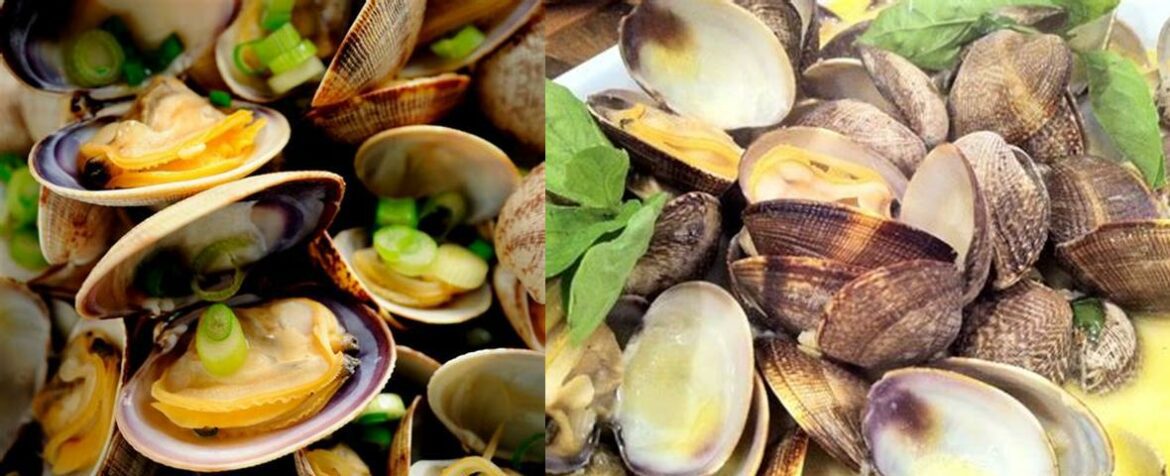What does clams taste like: Craving a taste of the sea? Wondering what clams bring to the table? Prepare to dive into the delectable world of clams and discover their tantalizing taste! Whether you’re a seafood aficionado or a curious foodie, this blog post will unravel the mystery behind the flavor profile of clams. So, grab your fork and get ready to savor the briny goodness that clams have to offer. Get ready to embark on a journey where the taste of the ocean meets your taste buds! Get ready to find out, “What does clams taste like?”
Clams: A Culinary Delight
Clams, belonging to the diverse group of bivalve mollusks, have captivated seafood enthusiasts for centuries with their delicate flavor and versatility in culinary preparations. While their taste profile can vary depending on species, season, and habitat, clams consistently offer a mild, briny essence that complements a wide range of dishes.
The Essence of Clams: A Symphony of Flavors
The flavor of clams is often described as mild, briny, and slightly sweet. This unique flavor profile is attributed to a combination of factors, including the clam’s diet, habitat, and the cooking method employed. Clams that feed on phytoplankton, microscopic algae found in seawater, tend to have a sweeter flavor, while those that consume detritus, decaying organic matter, often exhibit a more pronounced briny taste.
The time of year also plays a role in shaping the flavor of clams. Clams harvested during the warmer summer months, when phytoplankton populations are abundant, are typically sweeter and more tender. In contrast, clams harvested during the colder winter months, when phytoplankton populations are scarce, often have a saltier and more robust flavor.
Species and Regional Variations: A Culinary Journey
The culinary landscape of clams is further enriched by the diverse species and regional variations found across the globe. Each species of clam possesses distinct flavor characteristics, influenced by its unique diet and habitat. For instance, quahogs, a popular clam species found along the Atlantic coast of North America, are known for their slightly sweet and briny flavor, while littleneck clams, found in both the Atlantic and Pacific Oceans, offer a more delicate and milder taste.
Regional variations also contribute to the diverse flavor profiles of clams. Clams harvested from coastal areas with strong tidal currents, such as the Pacific Northwest, tend to have a more briny and pronounced flavor, while clams from calmer waters, such as the Gulf of Mexico, often exhibit a milder and sweeter taste.
Cooking Methods: Unveiling the Clam’s Essence
The cooking method employed can significantly impact the flavor and texture of clams. Steaming, a gentle cooking technique that preserves the clam’s natural flavors, is a popular choice for those seeking to savor the delicate essence of clams. Boiling, while a quicker method, can sometimes result in a slightly tougher texture. Clams can also be eaten raw, although this practice is best reserved for exceptionally fresh and clean clams to minimize the risk of foodborne illness.
Culinary Delights: A World of Clam Preparations
The culinary world abounds with diverse preparations that showcase the versatility of clams. From classic dishes like clam chowder, a creamy and flavorful soup, to steamed clams, a simple yet elegant appetizer, clams have earned their place in culinary traditions worldwide. Clams can also be grilled, fried, or added to pasta dishes, salads, and stir-fries, offering a briny and savory dimension to a wide range of culinary creations.
Conclusion: A Culinary Gem from the Sea
Clams, with their mild, briny, and slightly sweet flavor, have captured the hearts and taste buds of seafood lovers around the world. Their versatility in culinary preparations, from simple steamed dishes to elaborate chowders, makes them a staple ingredient in many cuisines. Whether enjoyed as a standalone appetizer or incorporated into a complex dish, clams offer a unique and delectable experience that continues to delight seafood enthusiasts everywhere.
FAQ about What Does Clams Taste Like
Q: How would you describe the flavor of clams?
A: The flavor of clams is often described as mild, briny, and slightly sweet.
Q: What factors contribute to the unique flavor of clams?
A: The flavor of clams is influenced by their diet, habitat, and cooking method. Clams that feed on phytoplankton tend to have a sweeter flavor, while those that consume detritus exhibit a more pronounced briny taste.
Q: Are clams a popular ingredient in various cuisines?
A: Yes, clams are a staple ingredient in many cuisines due to their versatile flavor and culinary adaptability.
Q: Do different species of clams have different taste profiles?
A: Yes, the taste of clams can vary depending on the species, season, and habitat. Regional variations also contribute to the diverse flavor profiles of clams.
Q: How does the location of harvesting affect the taste of clams?
A: Clams harvested from coastal areas with strong tidal currents tend to have a more briny and pronounced flavor, while clams from calmer waters often exhibit a milder and sweeter taste.
Q: What are some common cooking methods for clams?
A: Clams can be prepared in various ways, including steaming, baking, grilling, or incorporating them into dishes like chowders or pasta. The cooking method can affect the flavor and texture of the clams.


